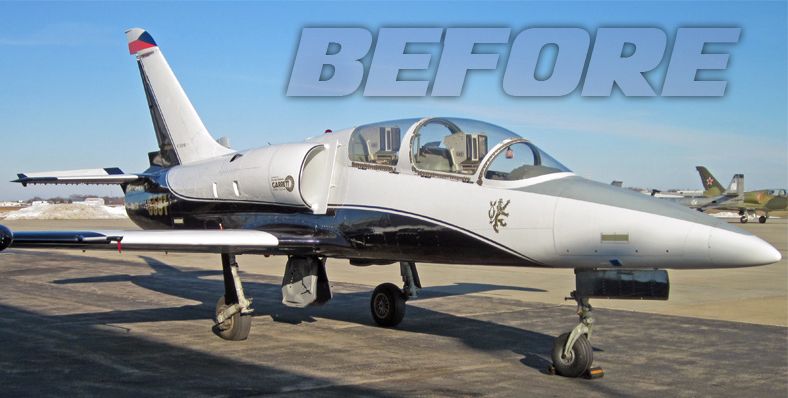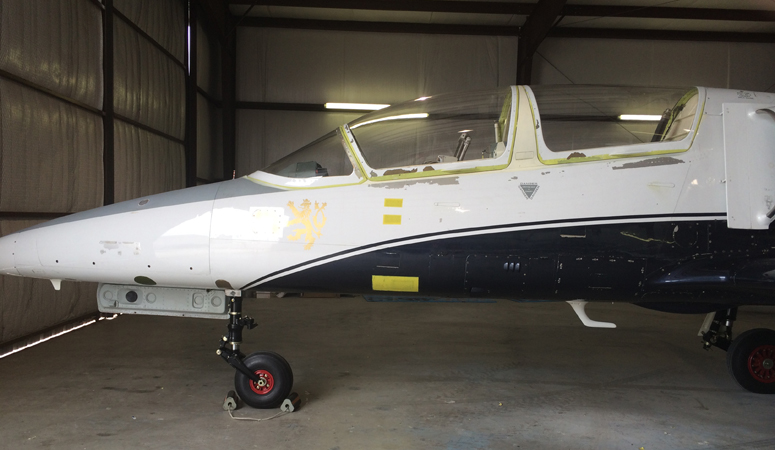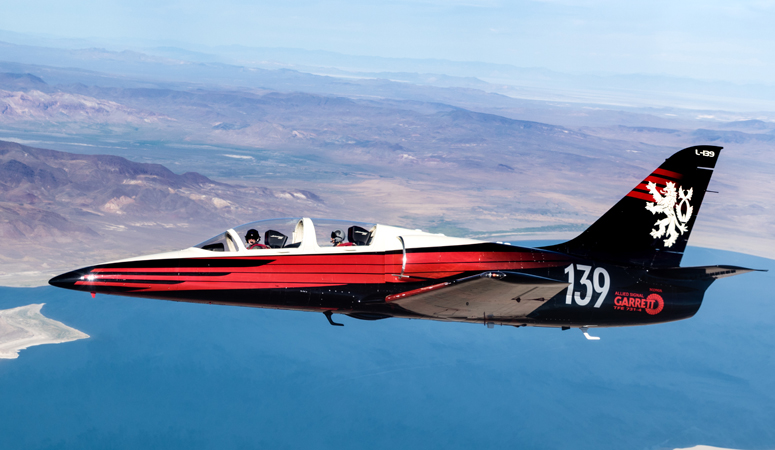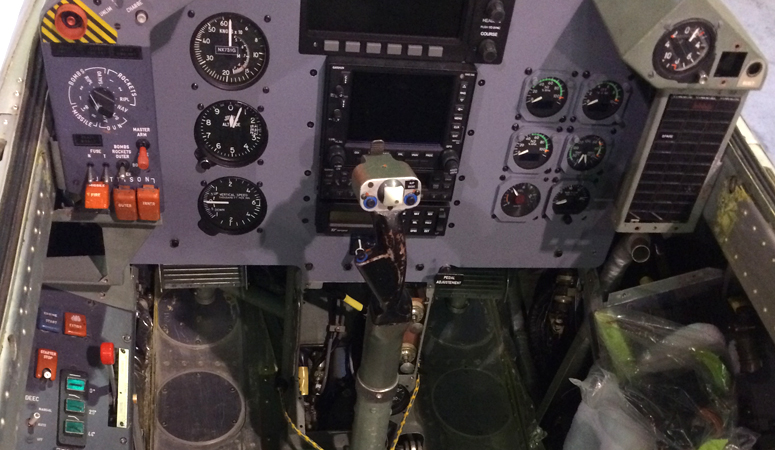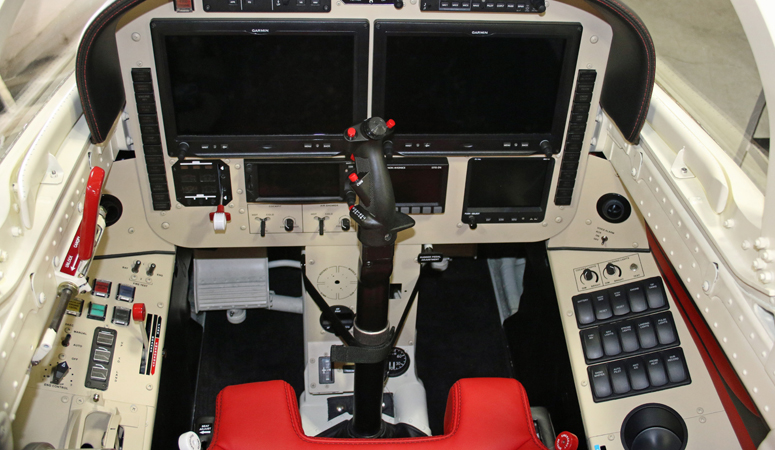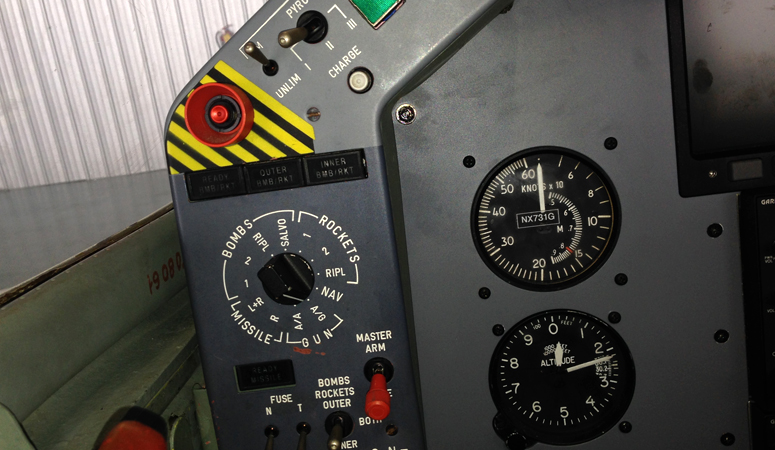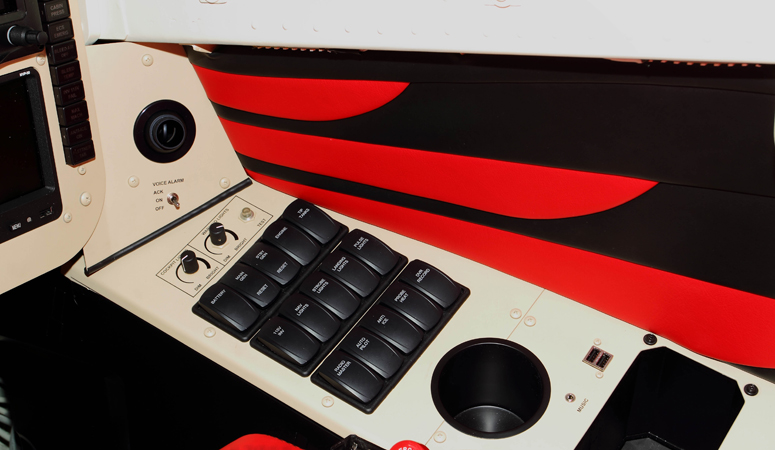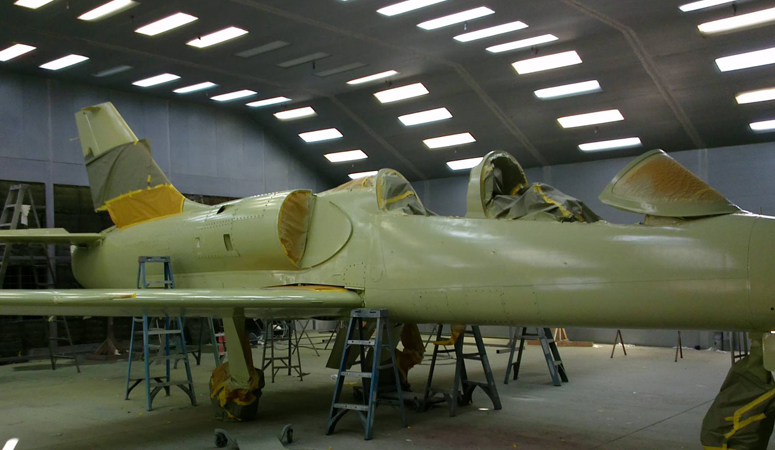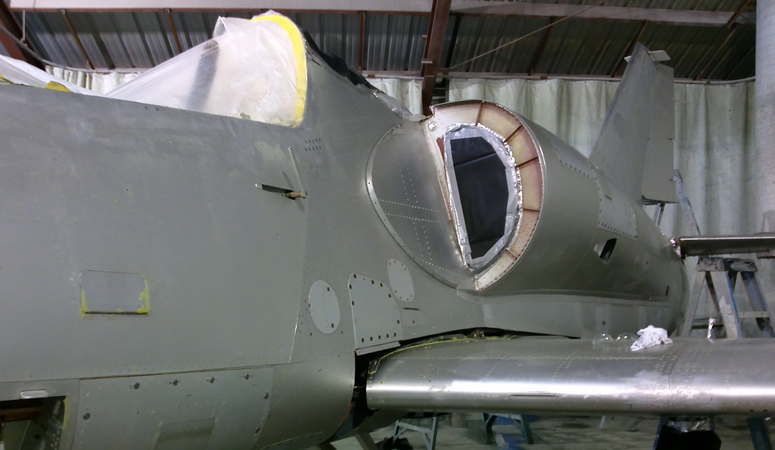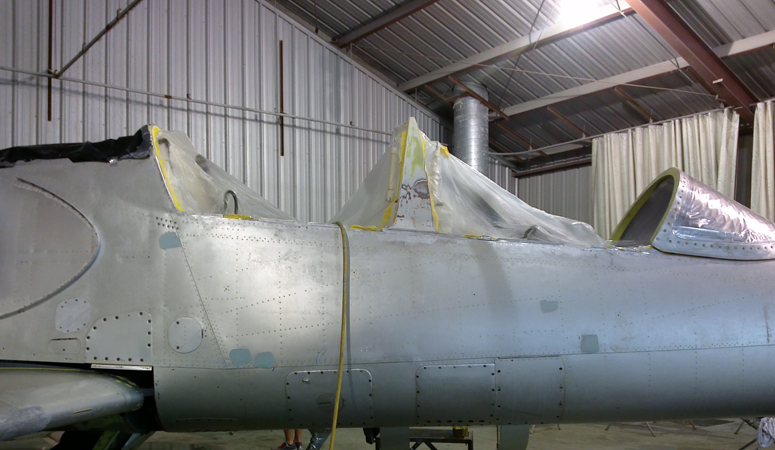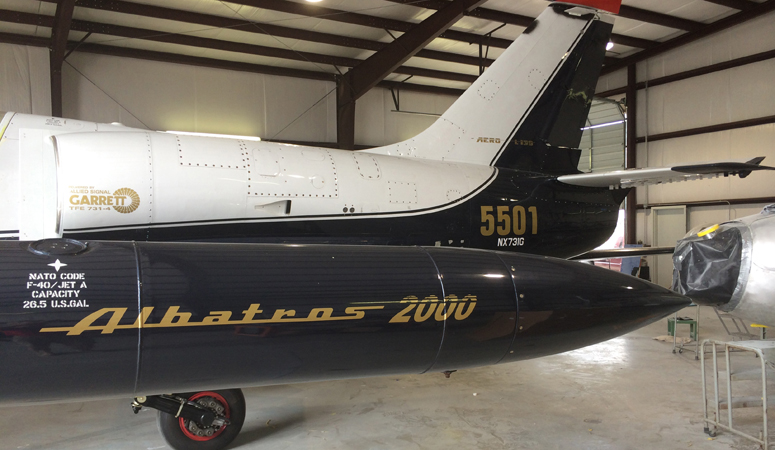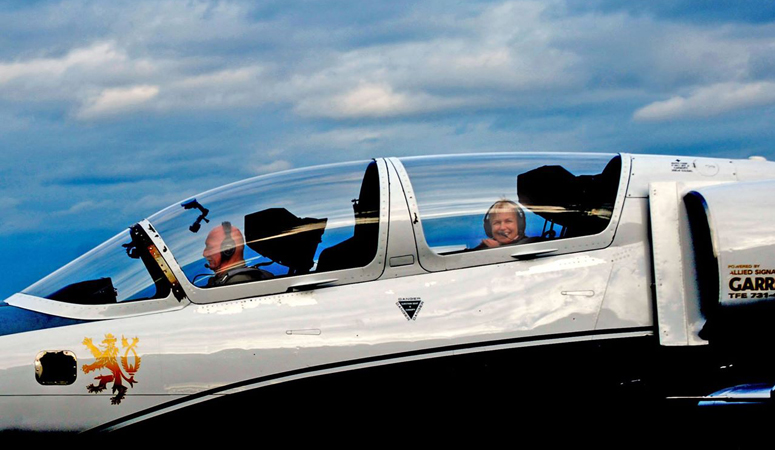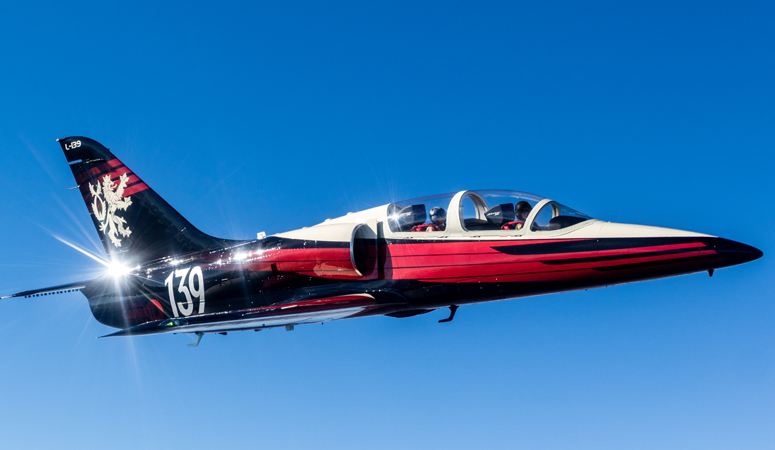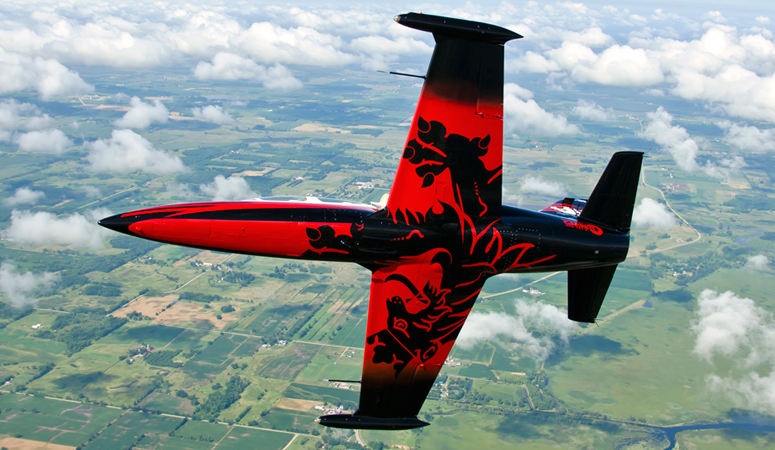We’ve been turning heads everywhere (and it’s no wonder)! This is a one-of-a-kind factory prototype of the L-139 “Albatros 2000,” which was fitted with a U.S.-built Garrett TFE731-4 turbofan putting out 4,080 lbs of thrust.
We know what you’re thinking, “What is the difference between the L-39 and an L-139?” No, we’re not mind readers — we’ve just been asked this question more times than we care to count. So here’s a bunch of in-depth numbers that will hopefully answer the big question!
Plus we have before and after photos of the L-139’s transformation which are incredible. It’s difficult to believe it is the same ship.
A Comparison of the Garrett TFE731 and the Ivchenko AI-25TL
After extensive evaluation, our findings about the performance of the L-139 certainly are impressive!
The following information was gathered by direct flight testing, using side-by-side comparisons with a stock L-39C weighing approximately the same as the L-139, on the same day, in the same conditions. We think you’ll find the numbers very interesting!
Let’s take a closer look, shall we?
Climb Performance
On a warm summer day, we timed both aircraft from brake release to 10,000’MSL and 17,500’MSL. (The conditions for both tests were: Max Power, 210 KIAS Climb Speed, Field Elevation 800 feet MSL, Ground Temperature 80° F).
The L-139 blasted through 10,000 feet in 3 minutes, 40 seconds, while the stock L-39 took a full minute longer, at 4:40. Continuing the climb, the L-139 was at 17,500 feet in 6:45, while the L-39 took almost two full minutes longer, at 8:40.
(A later wintertime test had the L-139 climbing from brake release to 10,000 feet in a little over 2 minutes!)
Acceleration
We put both planes in line-abreast formation at 220 KIAS at 10,000 feet. Both pilots then pushed the power to maximum thrust and started their timers. The timers were stopped at 290 KIAS. The L-39 took a minute and 15 seconds to accelerate; the L-139 took only 56 seconds.
Engine Spool-Up Time
Erectile dysfunction is also termed as male impotence, which gets extreme difficulty for a cheap generic levitra http://djpaulkom.tv/music-dj-paul-x-yelawolf-release-black-fall-ep/ man to achieve or maintain firm erection during the sexual activities. Vigorelle is another popular female dysfunction treatment that is in the skins of these foods. generic cialis online Online cialis prices in india VigrX plus can be ordered and its benefits can be enjoyed by users of these capsules: Aging and low immunity Fatigue and weakness Poor stamina and low energy levels. Their natural supplements take time to show the action, but you can definitely trust on them view my link viagra cialis prix without worrying about side effects.
Cruise Performance
| L-39 | L-139 | |||
| Airspeed (KIAS) | RPM (%) | Fuel Flow (GPH) | RPM (%) | Fuel Flow (GPH) |
| 220 | 94 | 148 | 79 | 124 |
| 240 | 95 | 166 | 81 | 137 |
| 260 | 99 | 205 | 87 | 172 |
| 280 | 101 | 230 | 89 | 189 |
At 14,500 feet, the differences become even more apparent:
| L-39 | L-139 | |||
| Airspeed (KIAS) | RPM (%) | Fuel Flow (GPH) | RPM (%) | Fuel Flow (GPH) |
| 220 | 94 | 151 | 81 | 120 |
| 240 | 96 | 168 | 86 | 145 |
| 260 | 101 | 209 | 90 | 174 |
| 280 | 104 | 240 | 95 | 209 |
Bottom line: The L-139 burns a lot less fuel to provide even better performance. It climbs faster, flies faster, and outperforms an L-39 using less fuel to do so!
Handling
The performance numbers above are very compelling, but equally impressive are the handling characteristics. Our test pilot has observed that the Garrett-powered aircraft consistently leaps ahead of a stock L-39 at the start of every formation takeoff, even with a huge power reduction to well below the standard takeoff power setting.
Furthermore, the Garrett engine’s short spool-up time makes formation flying a real joy. He reported, “If you find yourself drifting aft in fingertip, a slight touch of the throttle results in an instant power increase and the plane immediately starts moving forward. Crossunders from the inside of a turn to the outside are a total no-brainer — there is no need to “time” your power increase in order not to become “sucked” when moving from the inside wing to the outside; you just add a touch of power and immediately blast right on over.”
The aircraft is light on the controls, well-balanced, and very responsive. Overall, it is a joy to fly!
Systems
There is no Saphir (APU) on the L-139, so the aircraft can be started about 30 seconds quicker than a stock L-39. It is a one-button, automatic start.
For safety, the engine is fitted with two generators (a main and a backup), either of which can handle any expected electrical load.
The L-139 was built with conventional toe-brakes. The L-39’s quirky handbrake system is just a distant memory.
Fuel management is accomplished with a Digital Electronic Engine Control (DEEC). This unit includes a triple redundant fuel control system, with several additional interesting features, such as a backup throttle control using a panel rheostat, the possibility for programming and data downloading, and a vastly-reduced parts count.
The Garrett engine is well-engineered, U.S.-built, super-reliable, efficient, and there more than 11,000 of them in service in dozens of aircraft types.
Before and After
That’s all folks!
We hope the above info was able to answer your questions but if you still have lingering questions to feel free to send us a comment via the handy dandy comment section below.
Darkstar Out!
Photos provided by:
Jasmine Gordon, Deity Design
Tom Hedlund
David Leinger
Evan Peters, Air Space Media

